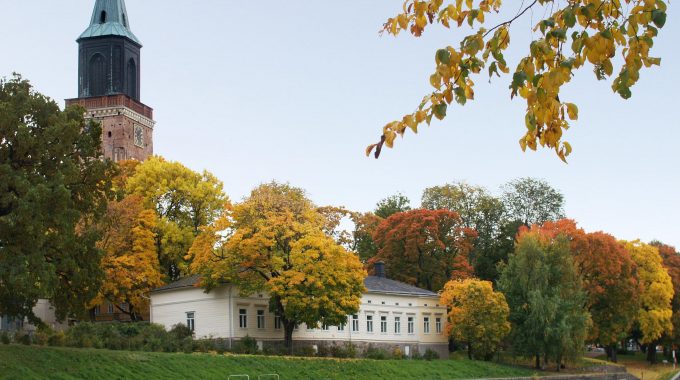
A European Journey #47 – Turku (Finland)
What elements are needed to build the sense of being a nation? Do we need a common language, a common culture, a common history, a common law, or a combination of all these things?
In this episode I will be exploring one of the main elements that built the Finnish nation.
First of all, in the Old Testament, all the elements I mentioned were part of what made up the nation of Israel. Especially the common history the people shared was to be transmitted from generation to generation. History was not merely about passing on names and dates. Above all, their history recorded what God had done for Israel. For this reason, Israel built monuments in memory of God’s mighty acts (Joshua 4). Israel also wrote books that told the history of God’s acts for their nation, such as the books of Judges, Samuel, Kings or Chronicles.
The mediaeval Finnish Church understood that this Biblical concept of history could also shape their own nationhood. The best place to understand this is Turku, in the region of Finland Proper. The first time we visited the city we discovered a monument in honour of Mikael Agricola, the 16thcentury Finnish reformer (also known as the father of the Finnish written language), next to the cathedral (see stage 23). Today, we will walk only three hundred meters from there and cross the road called Uudenmaankatu.
In the park on the other side of the road we will discover another monument of a man sitting in a chair and holding a pen. This man is an 18thcentury Finnish scholar named Henrik Gabriel Porthan. He is considered to be the father of Finnish history. The park where this statue can be found is also named after him. This monument, built by Swedish sculptor Carl Eneas Sjöstrand, was inaugurated in 1864. In front of the statue, we can see the Finnish coat of arms guarded by two angels, which apparently could symbolise the spirit of the Enlightenment or of science.
Henrik Gabriel Porthan was specialised in Finnish mythology and folk poetry. Through his works he is reported to have awakened the interest of the Finnish people in their own pre-Christian folk stories (that later became written down in the Kalevala) and Finnish mythology. However, the reason Porthan is known as the father of Finnish history is his publication of the Finnish Chronicle of Bishops(between 1784 and 1800). This was a major work on Finnish history of 900 pages, containing 56 academic theses.
But while Porthan’s work was the first academic work of its kind, The Finnish Chronicle of Bishops was a much older work. The first Chronicle, consisting of a list of biographies of the bishops of Turku, was written in this city in the 14thcentury. Two centuries later, one of the two major reformers of Finland, Paulus Juusten, improved the Chronicle by revising the biographies and by extending the list of bishops to his own time.
Paulus Juusten didn’t view history as a mere recording of dates and names. Rather he understood the Biblical definition of history as recognising God’s work among the Finnish people. Juusten wrote: “(God had) called us from the darkness of paganism to join and become part of the holy church, and lovingly guided us through the present troubled times, by continually sending us servants of the Gospel.” Paulus Juusten knew that Finland had been transformed through the impact of the Gospel on his fellow countrymen.
The Bible taught that Israel’s sense of nationhood was to be nurtured through teaching the history of what God had done for the nation. It is therefore not surprising that for Juusten it was extremely important to transmit the history of what God had done for his own nation to the next generations.
Later, Juusten’s Chronicle was published in Germany in the beginning of the 18th century. And some decades later, Henrik Gabriel Porthan included Juusten’s Chronicle in his own extensive work.
Although Porthan was one of the first to elevate the study of Finnish history to an academic level, it was Juusten’s Christian understanding of history that was foundational to the recording of Finnish history. Furthermore, the spirit of the Enlightenment and the spirit of science were not a valid basis for the study of Finnish history although the two angels on the monument here in Turku seem to suggest this. Although Henrik Gabriel Porthan could be identified today as a liberal theologian, he openly rejected the atheism of the Enlightenment.
The biblical nation of Israel was later destroyed because it forgot what God had done for them. Similarly, Finland can only have a future if it recovers the Biblical understanding of its own history. Rediscovering what God has done in Finland is the only foundation for the future of this Nordic nation.
See you next week somewhere else in Europe.
Cédric Placentino
Schuman Centre convener for Italian and French Europe
Follow A European Journey here.
Picture: Wikipedia – username: Andrei Niemimäki – link to license: https://commons.wikimedia.org/wiki/Commons:GNU_Free_Documentation_License,_version_1.2

This Post Has 0 Comments